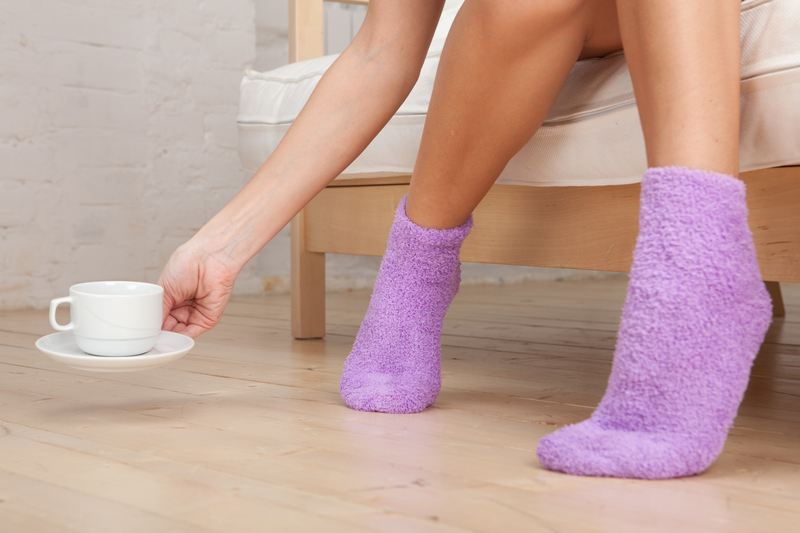Proven Methods for Velvet Curtain Conservation at Home
Posted on 04/06/2025
Proven Methods for Velvet Curtain Conservation at Home
Velvet curtains are a luxurious addition to any home, offering rich color, sumptuous texture, and an elegant drape that elevates interior decor. However, maintaining their beauty and longevity requires special care. If you're keen on preserving your investment, understanding the best techniques for velvet curtain conservation at home is essential. This comprehensive, SEO-optimized guide explores the most effective ways to keep your velvet drapes looking vibrant and immaculate for years to come.

Why Velvet Curtain Conservation Matters
Velvet is recognized for its plush pile, stunning luster, and delicate fibers, which can easily attract dust, stains, and even mold if not properly cared for. Curtain conservation ensures not only the aesthetic preservation of your window treatments, but also prolongs their usefulness and value. Proper home conservation methods can save you from expensive professional cleaning or early replacement.
- Longevity: Proper maintenance delays fabric wear and tear.
- Appearance: Regular conservation keeps colors vivid and textures plush.
- Hygiene: Prevents the buildup of allergens and dust mites within the fabric.
- Cost-saving: Reduces the need for frequent replacements and professional care.
Understanding Velvet: Types and Their Unique Needs
Before exploring conservation techniques, it's vital to understand the different types of velvet you may encounter:
- Cotton Velvet: Soft and breathable, but absorbs moisture and may crush easily.
- Synthetic Velvet: Durable, more resistant to staining and crushing, but may be affected by heat.
- Silk Velvet: Extremely delicate, lustrous, and sensitive to both moisture and sunlight.
- Crushed or Embossed Velvet: Designed with a permanent texture; care must preserve the patterned pile.
Always check the manufacturer's care label before performing any cleaning or conservation on your velvet curtains.
Daily and Weekly Maintenance for Velvet Drapery
1. Dusting: A Key Element of Velvet Drapes Conservation
Regular dusting is paramount in velvet curtain preservation at home. Use a soft-bristle brush or a handheld vacuum with a gentle upholstery attachment. Always move in the direction of the fabric pile to avoid flattening the texture.
- Dust weekly to prevent buildup and to keep colors vivid.
- Use a lint roller for stubborn pet hair or threads.
2. Shaking and Fluffing
Every 1-2 weeks, gently shake your velvet drapes outside to dislodge dust. Afterward, use your hands to fluff and separate the pile. For larger curtains, close them and gently brush the surface, ensuring even attention to all sections.
3. Avoiding Sunlight Exposure
Direct sunlight can cause fading and fiber breakdown. If possible, position your velvet drapes away from continuous exposure, or use sheer liners to diffuse light. Alternatively, draw curtains during the sunniest hours to protect the fabric.
Deep Cleaning Velvet Curtains at Home
While daily and weekly maintenance addresses surface dust and minor dirt, deep cleaning velvet curtains should be performed every six months. Proper home cleaning prevents embedded grime without damaging the pile.
Step-by-Step Home Velvet Curtain Cleaning
- Dust First: Vacuum or dust curtains as outlined in the previous section.
- Spot Test: Always test any cleaning method or solution on an inconspicuous area first.
- Spot Cleaning: For small stains, use a solution of mild dish soap and lukewarm water. Dampen (do not soak) a soft, white cloth and blot the stained area. Never rub or scrub--always blot gently in the direction of the pile.
- Dry Immediately: Use a dry cloth to absorb residual moisture. Allow the area to air dry fully; avoid heat sources such as hairdryers, which can distort pile.
Is Washing Velvet Curtains at Home Possible?
Machine-washing velvet curtains is not recommended unless the care label specifically allows it and the material is a durable synthetic blend. For most types, gentle hand-washing (if allowed) is safer:
- Fill a tub with cool water and mild detergent.
- Submerge one panel at a time, swirling gently.
- Rinse thoroughly to remove all soap.
- Support the weight of the wet curtain to prevent strain on the fabric.
- Lay flat or hang to dry indoors, away from sunlight.
- Do not wring or twist velvet fabric!
When in doubt, invest in professional cleaning to avoid irreversible damage.
Removing Stains from Velvet Curtains
Immediate action is crucial for effective stain removal on velvet drapes. Here are targeted methods for common stains:
- Wine or Juice: Blot with a clean, dry cloth. Use a mix of mild soap and water to gently dab the area, then blot dry.
- Grease or Oil: Sprinkle the stain with cornstarch or talc powder to absorb oil. Let sit for several hours, then brush off.
- Ink: Use isopropyl alcohol on a cotton swab, gently dabbing (never rubbing) from the edges toward the center to prevent spread.
- Mold or Mildew: Air the curtain in a dry location, then use a vinegar-water solution to carefully dab affected areas. Dry thoroughly.
Never use bleach or strong solvents on velvet--they can destroy both color and pile.
Dealing with Wrinkles and Creases on Velvet Window Coverings
Velvet is prone to creasing, especially after washing or storage. Here's how to restore velvet curtain pile safely at home:
- Steaming: Use a clothes steamer from a distance of several inches. Hold the fabric taut and allow the steam to relax the fibers and revive the pile.
- Iron Carefully: If needed, use an iron with a velvet setting, always with a pressing cloth between the iron and velvet. Never touch the pile directly with the iron.
- Brushing: After steaming, gently brush the velvet with a soft-bristle clothing brush in the direction of the pile to lift flattened fibers.
Preventative Measures for Velvet Curtain Conservation
1. Regular Rotation
Rotate the curtain panels every few months to ensure even exposure to sunlight and usage. This method prevents uneven fading and wear.
2. Use of Curtain Liners
Attaching a liner to the back of your velvet curtains protects them from direct sunlight and dust, extending their life and maintaining vibrant color.
3. Maintain Optimal Humidity
Velvet is susceptible to mold in damp environments. Use a dehumidifier in humid areas, and avoid hanging velvet curtains in bathrooms or kitchens with poor ventilation.
4. Reduce Touching
Advise household members to handle velvet drapes minimally to prevent oils from hands flattening the pile or causing stains.
Proper Storage of Velvet Curtains
Should you need to store your velvet window coverings, follow these expert conservation steps:
- Clean or launder curtains before storage.
- Roll the curtains around a cardboard or fabric tube rather than folding--this helps avoid creasing.
- Store in a breathable cotton bag or sheet. Never use plastic, as it can trap moisture and lead to mold growth.
- Place in a cool, dry, and dark location such as a closet or attic, away from pests and direct sunlight.
DIY Velvet Curtain Revival: Restoring Lost Luster
If your velvet drapes appear dull or worn, all may not be lost. Revival at home is possible:
- Use a fabric freshening spray specifically designed for velvet. Spray lightly from a distance for a quick lift.
- Steam and brush the pile after hanging. This not only removes wrinkles but also lifts crushed fibers.
- For severe dullness, consider professional cleaning followed by a gentle steaming at home.
When to Seek Professional Velvet Curtain Conservation Services
Despite diligent at-home efforts, some issues may require expert intervention:
- Persistent stains or odors that cannot be removed with home methods.
- Silk velvet or antique curtains that are especially fragile or valuable.
- Extensive water or fire damage requiring restoration expertise.
In these cases, look for experienced cleaners who specialize in luxury fabrics and ask about their velvet-specific techniques.

Frequently Asked Questions on Home Velvet Curtain Conservation
Can You Vacuum Velvet Curtains?
Yes--use a handheld vacuum with a soft brush attachment, and always move in the direction of the pile to avoid flattening the fibers.
How Often Should I Clean My Velvet Drapes?
Weekly dusting and biannual deep cleaning is recommended, but this can vary depending on local conditions such as dust, humidity, and sunlight exposure.
What Is the Best Way to Remove Pet Hair from Velvet Curtains?
A lint roller is effective for removing pet hair. A slightly damp rubber glove can also be used to gently lift hair off the fabric.
Conclusion: Make Your Velvet Curtains Last with Proven Conservation Methods
Velvet curtain conservation at home is entirely achievable with regular care, gentle cleaning, and some preventative strategies. With the proven methods outlined above, your velvet drapes will continue to bring warmth, luxury, and vibrancy to your space for years to come. Remember to always check fabric care labels and consider professional help when uncertainty arises--your beautiful home deserves nothing less.
By following these expert tips for velvet curtain preservation, you'll enjoy both the elegance and value of your window coverings, all while enjoying a healthier, more beautiful home environment.
